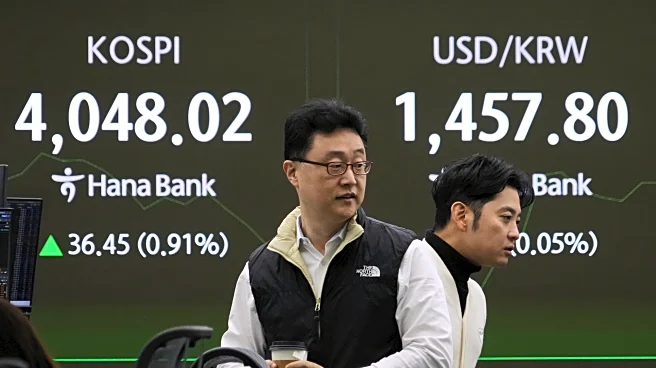What's Happening?
The IRS has announced an increase in the annual contribution limit for 401(k) plans to $24,500 for 2026, up from $23,500 in 2025. This adjustment also applies to 403(b) plans, governmental 457 plans, and
the Thrift Savings Plan. Additionally, the contribution cap for individual retirement accounts (IRAs) will rise to $7,500, with a catch-up contribution limit of $1,100 for individuals aged 50 and over. The catch-up rate for 401(k) plans will be set at $8,000 next year, marking the largest year-over-year increase since 2023. The IRS's decision reflects higher inflation levels in 2025, according to Craig Copeland, director of wealth benefits research at the Employee Benefit Research Institute.
Why It's Important?
The increase in contribution limits is significant for U.S. workers planning for retirement, as it allows for greater savings potential in tax-advantaged accounts. This change comes amid conflicting reports on retirement readiness, with many workers expressing concerns about insufficient savings. The adjustment may encourage more workers to maximize their contributions, potentially improving their financial security in retirement. Employers and financial advisors may need to educate employees on the benefits of increased contributions and the importance of retirement planning.
What's Next?
As the new limits take effect, financial professionals and employers are expected to guide employees in understanding the implications of these changes. The IRS's adjustments may prompt discussions on retirement strategies, including the benefits of early and increased contributions. Employers might also consider offering educational resources to help employees navigate these changes and optimize their retirement savings.
Beyond the Headlines
The IRS's decision to increase contribution limits may also influence broader economic trends, as increased savings could impact consumer spending and investment patterns. Additionally, the changes may prompt legislative discussions on retirement policy and the adequacy of current savings vehicles in addressing future retirement needs.












